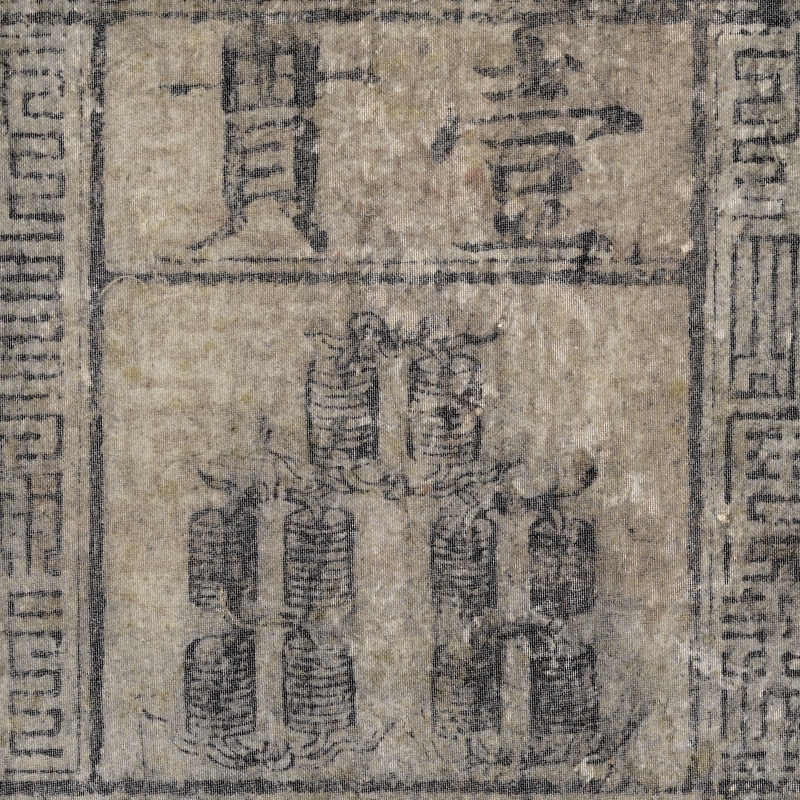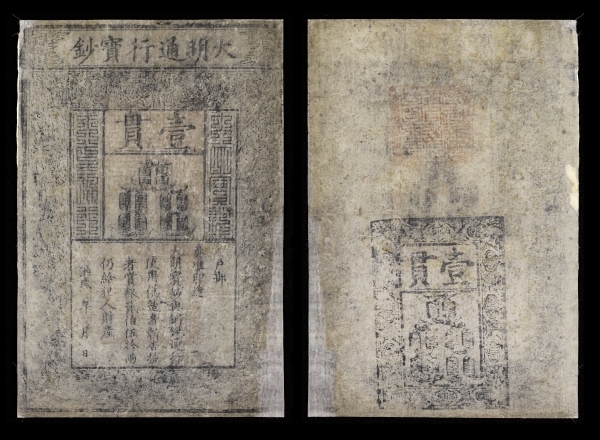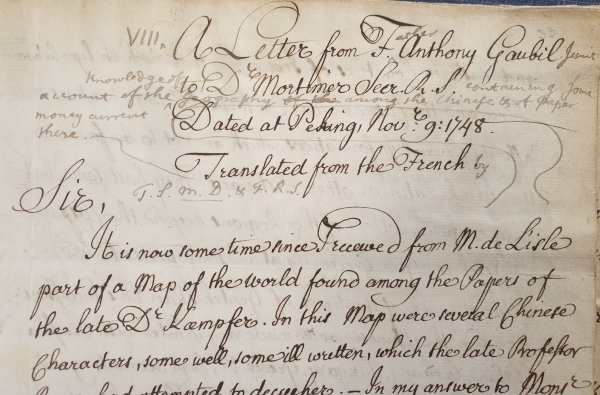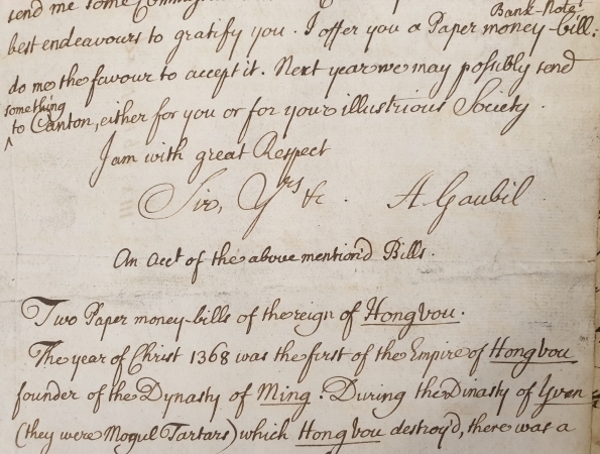Jon Bushell looks at connections between the Royal Society and China, and tells the story of how a Ming Dynasty banknote found its way into our collections.

The Royal Society has many connections with Chinese scientific and historical institutions.
Our Foreign Secretary Professor Richard Catlow FRS, and Executive Director Dr Julie Maxton, recently went to China to visit our scientific colleagues, and just last week the Library team hosted several guests from the Qian Xuesen Library and Museum in Shanghai. They were here to research Qian Xuesen’s visit to the United Kingdom in 1987, as the leader of a delegation from the China Association for Science and Technology. This provided an opportunity to show off some of our archival material, and to reflect on the long history of relations between the Royal Society and China.

Ming banknote (front and rear), RS L&P/2/33 © The Royal Society
One of the oldest Chinese documents we have is a Ming dynasty paper banknote, likely printed around 1400. Paper money is a Chinese invention, dating back to around the tenth century. A common practice among Chinese merchants was to store their coin with a trusted agent, and carry an early form of promissory note instead; these could be used in place of the coins themselves, and be exchanged for the money with the agent at a later time. The Song dynasty developed this practice further, and by the twelfth century it operated a number of printing factories, creating paper notes for use in particular regions of the Empire.
Kublai Khan adopted the practice when he conquered China and established the Yuan dynasty in 1271. The Italian merchant Marco Polo was so intrigued by the idea that he devoted a chapter of his book to the subject of ‘How the great Khan Causes the Bark of Trees, Made into Something Like Paper, to Pass for Money All over His Country’. The concept of paper money began to spread to Europe around this time, but it wasn’t until the seventeenth century that the practice really took off in the West.
From its inception, the Royal Society had always been interested in gathering information about China’s history and scientific developments, and correspondence from Jesuit missionaries in the country was a valuable resource. One eighteenth-century missionary was a Frenchman, Father Antoine Gaubil, who wrote to the Society on numerous occasions; translations of many of his letters later appeared in the Philosophical Transactions.

Page 1 of RS L&P/2/33 (detail) © The Royal Society
In Peking on 9 November 1748, Gaubil wrote a letter to Royal Society secretary Cromwell Mortimer, and enclosed two banknotes, one of which Mortimer gifted to the Society in 1749. It is a 1 guan, or one-string, note, meaning that the bearer could exchange it anywhere throughout the empire for a string of 1000 copper coins. However, the government did not set limits on how many notes could be printed, and the bills had no expiry dates; this led to huge levels of inflation, and by 1535 a 1 guan note was worth less than a third of one copper coin!
Inflation put an end to the use of paper money in China for several centuries. As such, notes like this one were relatively rare by the eighteenth century, and the fact that Gaubil was able to procure two examples for Mortimer is certainly interesting. Our note remained in the archive, along with the manuscript of Gaubil’s letter, for over 250 years. Its significance was only realised in 2008, when a Chinese visitor from the Needham Research Institute in Cambridge spotted it in our collection. It just goes to show the benefits of the long history of cooperation between the Royal Society and China.

Page 3 of RS L&P/2/33 (detail) © The Royal Society






